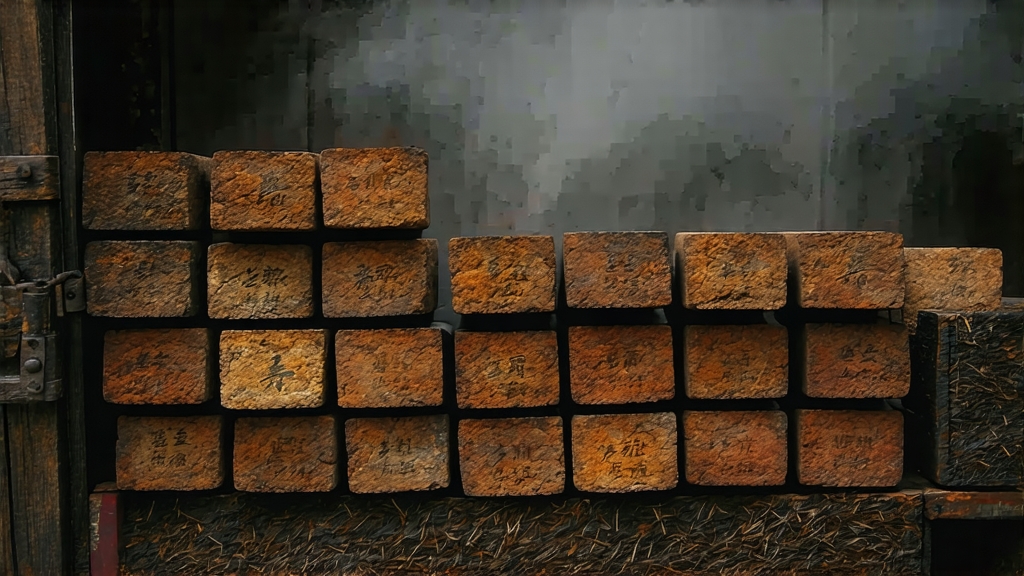
Liu Bao, literally “Six Forts,” is the quietest celebrity in China’s dark tea galaxy. While Pu-erh grabs headlines, this Guangxi native has spent four centuries maturing in bamboo baskets, developing a flavor that Chinese truck drivers once called “the diesel that doesn’t stain the engine.” To understand Liu Bao is to listen to a tea that speaks in bass notes of forest floor, damp bark, and a fleeting top-note of dried longan.
History: From Border Garrison to Maritime Silk Road
The name Liu Bao refers to the six defensive fortresses built during the Ming dynasty along the upper reaches of the Cangwu River in Wuzhou prefecture. Tea grown there was compressed for easy portage by soldiers and traded for horses with northern minorities. By the Qing Qianlong era (1736–1795), Liu Bao was already listed among the “24 famous teas” submitted as tribute to the emperor. When the British opened the port of Wuzhou in 1897, Liu Bao sailed to Southeast Asia on the same junks that carried opium and spices. Coolies in Malaya and Singapore discovered that a cup of Liu Bao eased the humidity and prevented beriberi; soon every Chinese mining camp had clay kettles bubbling with its deep red liquor. The tea became so integral to diaspora life that Malaysian rubber tycoons began bidding on vintage baskets at the same fever pitch Italian wine collectors chase Barolo.
Terroir: Karst Hills and River Fog
Guangxi’s subtropical red soils are rich in iron oxide and quartz, the result of limestone weathering that also produces the province’s iconic karst peaks. Liu Bao bushes sit between 200–500 m on terraced slopes where the Cangwu River’s morning fog slows photosynthesis, thickening leaf cuticles and concentrating polyphenols. Indigenous small-leaf cultivars (Camellia sinensis var. sinensis) share space with ferns that exude natural antimicrobial compounds, reducing pest pressure and allowing farmers to garden almost without agro-chemicals. The result is a leaf that arrives at the factory already faintly scented of river stones and wild orchid.
Craft: The Dance of Water, Heat, and Microbes
Liu Bao belongs to the “post-fermented” category, but its microbiology is distinct from Yunnan’s Pu-erh. After spring picking, leaves are wilted under shade for two hours to reduce grassy volatiles, then wok-fired at 280 °C for eight minutes—long enough to kill oxidases yet short enough to preserve leaf integrity. The crucial step is “wet piling” (wo dui): the warm leaves are piled 70 cm high on bamboo mats, sprayed with Cangwu River water, and covered with jute sacks. A consortium of Aspergillus niger, Blastobotrys adeninivorans, and local Bacillus strains proliferates, raising the pile temperature to 55 °C within 36 hours. Every two days the pile is turned by barefoot workers who judge readiness by aroma: the goal is a sweet, almost soy-sauce-like note without the swampy off-odors that signal over-fermentation. After 25–30 days the leaves are sun-dried, then steamed and packed into cylindrical bamboo baskets lined with banana leaves. These baskets, still hand-woven in the village of Liudong, allow micro-oxygenation while keeping humidity at 70 %—ideal for a decade-long second fermentation.
Aging: The Bamboo Time Machine
Unlike Pu-erh cakes that age in stone warehouses, Liu Bao travels. From 1950 to 1980 the state-owned China Tea Company shipped thousands of baskets to humid Singapore and Kuala Lumpur on purpose; the tropical climate accelerated maturation, turning three-year tea into the equivalent of ten-year tea stored in drier Guangxi. Today collectors speak of “Malaysian return” Liu Bao the way Burgundy lovers speak of “back-vintage ex-domaine” bottles. A well-stored basket loses its initial earthy punch, developing instead camphor, nutmeg, and the prized “betel-nut” note (bin lang xiang) that lingers on the cup rim like beeswax.
Grades & Shapes
Liu Bao is graded by leaf maturity:
- Special Grade (te ji): one bud with two leaves, produces a bright crimson liquor and honeyed finish.
- First Grade (yi ji): one bud with three leaves, deeper color, more tann